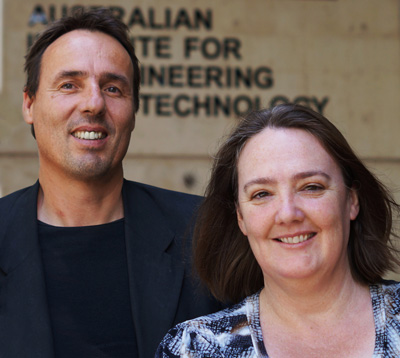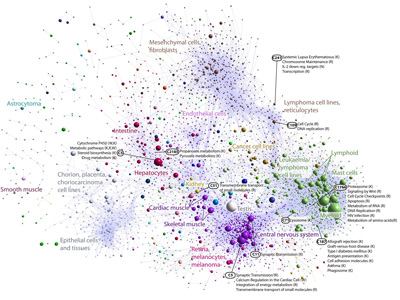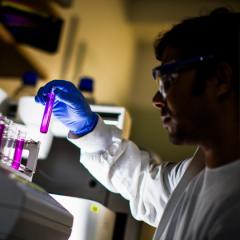
Advances in the scientific understanding of human genes is giving unprecedented insight into health, development and behaviour, Australian Institute for Bioengineering and Nanotechnology(AIBN) researchers say.
AIBN Associate Professor Christine Wells says an international, collaborative project is unlocking the keys needed to read and understand the “DNA book”.
The international genome research consortium FANTOM (Functional Annotation of the Mammalian Genome) involves scientists from more than 20 countries.
“The way DNA information is used in different cells at different times, through development – or in cells interacting with environmental signals – is a whole library of information,” A/Prof Wells said.
“We are only just coming to terms with the size of the library.

“We don’t really understand the cataloguing system and we are trying hard to find the rules to help us navigate the rich information now available.
“This exciting project is revealing whole libraries, and whole shelves and books in the library, that we have never seen before. It is giving us information about the role of some genes that were previously unknown.
“The cure for a disease may well be held in one of these books, but this project is mapping the library, and not hunting for any single thing.”
UQ's Australian Infectious Diseases Research Centre contributes to Associate Professor Wells’ AIBN research group, and to FANTOM.
AIBN’s involvement in FANTOM has resulted in long-term collaborations with researchers from the RIKEN Center for Life Science Technologies in Japan; in the UK; Denmark; the US; Sweden; Italy and Switzerland.
A/Prof Wells said FANTOM’s findings enabled researchers to learn the rules of DNA information flow.
“We are starting to understand how cells find the right information in the precise instant that it is needed,” she said.
“The sheer ambition of this project required hundreds of researchers, committing to a generous sharing of skills, and data.
“To embed what we do in the lab at the AIBN in Brisbane into this huge global project has been extremely rewarding.”
The fifth iteration of the collaboration, known as FANTOM 5, involved UQ researchers in stem cell biology, infection and immunity.
They included Dr Antje Blumenthal and Dr Tony Kenna from the UQ Diamantina Institute; the AIBN’s Dr Kelly Hitchens, Dr Anthony Beckhouse, Dr Dipti Vijayan, Dr Dmitry Ovchinnikov and James Briggs; Associate Professor Geoff Faulkner from UQ’s School of Biomedical Sciences and Mater Research; and Honorary Professor Alan Mackay-Sim from Griffith University.
As part of the same project, the AIBN’s Associate Professor Ernst Wolvetang has for the first time been able to map in “exquisite detail” the gene regulatory networks underlying the first steps of human brain development.
The FANTOM 5 findings have been published in the prestigious journal Nature. To view the paper, click here.


